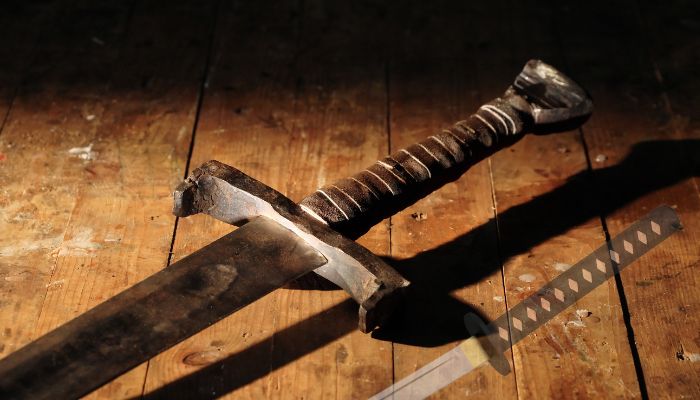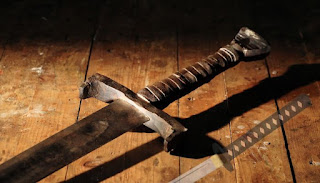The katana is the most effective instance of the deep connection between Japanese tradition and the battle spirit. Its curved form and lengthy historical past of preventing and martial arts use appeal to many weapon lovers and followers. However a query has been round for a very long time: Is the katana merely extra highly effective than different swords, or is it utilized in totally different strategies and regarded nice?
On this publish, we’ll focus on how they have been made prior to now and their function in battles. Since a katana is a high-precision weapon, let’s go deeper into the world of swords and see what makes the katanas so particular.
Evaluating Blade Design
We focus on evaluating blade designs as a result of they will let you see sure elements of 1 sword as totally different from the opposite. Allow us to suppose the katana is an instance. Its simplicity and eccentricity make it distinctive, because it has a rounded form with a single sharp edge. One of these curve, the sori, performs a tremendous perform by directing the hanging energy to a smaller space, finally making a extra highly effective impact.
One other key facet of the katana is that it has solely a single sharp edge. This makes utilizing the broadsword not solely simpler but additionally extra comfy, permitting the individual to inflict injury with ease and defend themselves with relative effectivity. As well as, the blade is sharpened by narrowing and sharpening till it turns into very sharp and highly effective, which ends up in quick slicing.
However, different swords, that are concerning the methodic approach they’re used and from the place they arrive, produce other designs, for instance. European longswords which might be geared up with two sharp edges and able to delivering each thrusting and slicing assaults.
Forging Methods and Supplies
So far as making a katana is worried, the highlight is all the time on the processes of how the sword is made and what it’s fabricated from. The katana, probably the most well-known Japanese sword is utilized by Japanese sword makers utilizing a singular methodology known as “tamahagane.” They make a blade by utilizing this conventional methodology. They start with melting iron sand and charcoal collectively beneath an iron pot known as a Tatara. Nevertheless, such varieties of metal are known as “tamahagane”s, that are very sturdy.
Then comes the laborious half: the embodiment of the deep energy of metal that finally types the blade. The swordsmith repeatedly repeats hammering, folding, and shaping to hold away the particles and strengthen the blade. Then they heat it, and afterward, they plunge it into the water, thus including additional energy to it. This refers back to the charring of the meat by cooking over charcoal on this method.
Along with the blade, the katana comes with a number of different sections, just like the hand guard and the deal with. These are ceaselessly from metals, resembling iron, brass, and ray pores and skin. The target is to search out artisans from expert craftsmen who’re truly helpful and handsome. There are diverging strategies utilized by the totally different cultures, with some cultures making the swords from totally different supplies and different methods. As an illustration, European swords have decorations marked on them as they use another and extra sophisticated methodology known as pattern-welding.
Conclusion
Whereas the sword vs. katana competition emerges not out of the steel of the blades however the thought behind the actual piece of steel. The cultural and historic attributes of the latter decide the energy of the katana is famend for its extraordinarily excessive slicing proficiency and cautious craftsmanship. Nevertheless, swords from international locations apart from Japan have distinctive talents and particular qualities. That are thought of benefits. In fact, nevertheless, a sword is probably the most highly effective when properly wielded; it takes mastery and self-training to turn into the sword’s information alongside the way in which, respecting the weapon’s creator and the tradition that types them.









